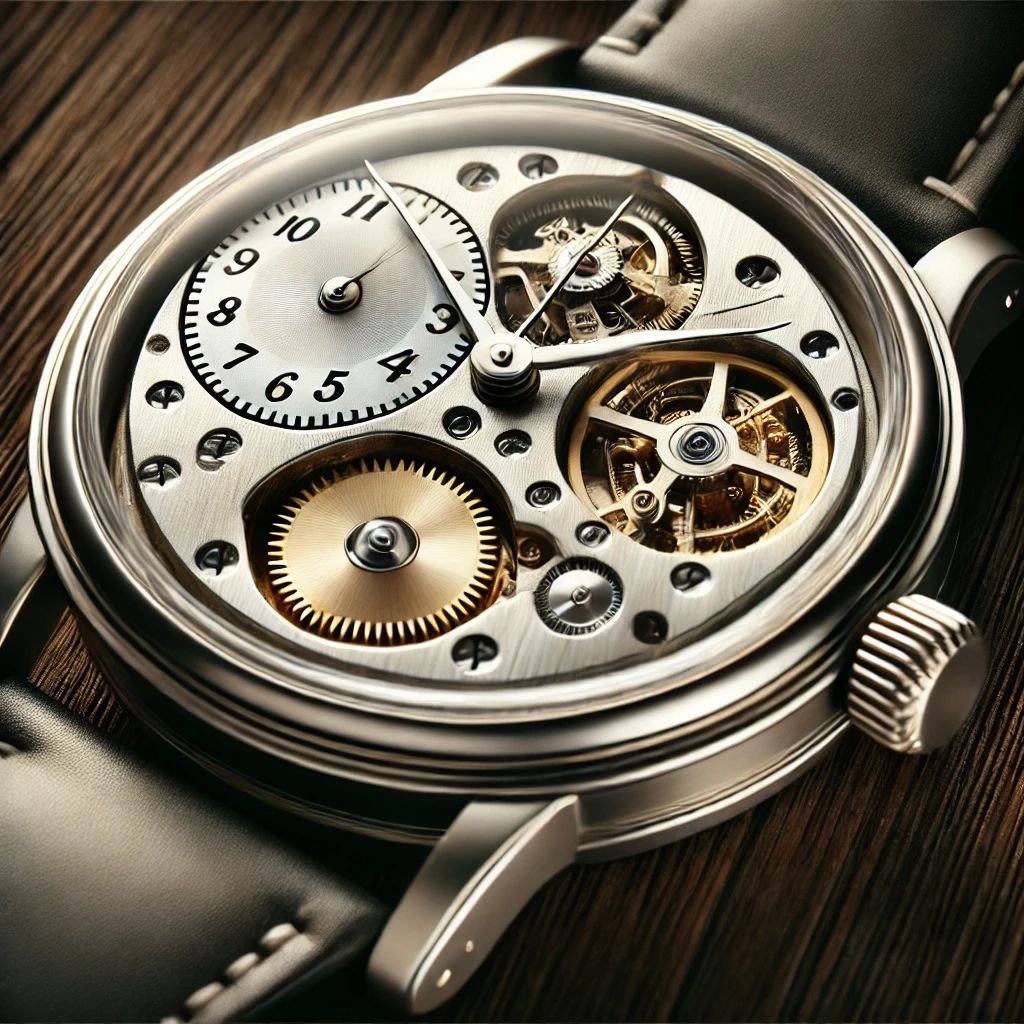
Welcome to the first edition of the Watches Garage newsletter! As we embark on this horological journey together, it’s essential to understand the basics of mechanical watches and what makes them so special. Whether you’re a novice or a seasoned enthusiast, this guide will provide valuable insights into the fascinating world of mechanical timepieces.
What is a Mechanical Watch?
A mechanical watch is a timepiece powered by a complex system of gears, springs, and other mechanical components. Unlike quartz watches, which rely on a battery to keep time, mechanical watches operate through the energy stored in a wound spring. This energy is gradually released to move the watch hands and measure time accurately.
Types of Mechanical Watches
There are two main types of mechanical watches:
1. Manual-Winding Watches: These watches require the wearer to regularly wind the crown to tighten the mainspring, which stores energy. This winding process needs to be done daily or every few days, depending on the watch’s power reserve.
2. Automatic Watches: Also known as self-winding watches, these timepieces have a rotor that moves with the wearer’s wrist movements. The rotor winds the mainspring automatically, eliminating the need for manual winding as long asthe watch is worn regularly.
Key Components of a Mechanical Watch
Understanding the core components of a mechanical watch helps appreciate the craftsmanship involved:
1. Mainspring: This coiled spring stores energy when wound and releases it to power the watch.
2. Gear Train: A series of gears that transmit energy from the mainspring to the escapement.
3. Escapement: Regulates the release of energy in controlled intervals, ensuring accurate timekeeping.
4. Balance Wheel: Oscillates back and forth, working with the escapement to regulate time.
5. Dial and Hands: Display the time, with the hands moving in response to the gear train’s energy.
The Beauty of Mechanical Watches
One of the most enchanting aspects of mechanical watches is the way they come to life on your wrist. This phenomenon is not merely a technical function but a profound metaphor for human existence and the intricate interplay of life and time.
In winding a mechanical watch, or simply wearing an automatic one, you impart energy to the timepiece, animating it with a semblance of life. This act parallels the ancient philosophical concept of the vita activa, the active life, where our actions breathe life into the world around us. The watch, a marvel of engineering and artistry, becomes a partner in our daily journey, embodying the Aristotelian idea of entelechy—the realization of potential.
This dynamic interaction between the wearer and the watch creates a personal connection, transforming a mere object into a companion. The intricate machinery within the watch, with its gears and springs, mirrors the complexity of the human condition. Just as the watch requires care, attention, and a touch to function optimally, so too do our lives demand engagement, nurturing, and a harmonious balance of our inner workings.
From a philosophical perspective, the ticking of a mechanical watch is a reminder of tempus fugit, the fleeting nature of time. Each tick represents a moment passed, a fragment of life that will never return. Yet, within this relentless progression lies the beauty of mindfulness. The constant movement of the watch hands encourages us to remain present, to cherish each second, and to find meaning in the perpetual motion of life.
Moreover, the mechanical watch symbolizes resilience and endurance. Despite the passage of time and the wear and tear of daily use, it continues to function, provided it receives proper care. This resilience reflects the Stoic philosophy of enduring hardships and maintaining one’s integrity and purpose through life’s trials. The watch, in its steadfast ticking, embodies the Stoic ideal of amor fati—loving one’s fate and embracing the journey, no matter how challenging.
In animating a mechanical watch, we also engage in a dialogue with history and tradition. Each watch carries the legacy of centuries of horological innovation and craftsmanship. It is a testament to the human spirit’s quest for precision, beauty, and mastery over the measurement of time. This historical continuity echoes the thoughts of existentialist philosophers like Heidegger, who emphasized the importance of being aware of our place within the continuum of existence.
Ultimately, the beauty of mechanical watches lies not only in their physical form but in their profound philosophical symbolism. They remind us of the delicate balance between action and stillness, the transient and the eternal, and the intricate dance of life and time. By wearing and caring for a mechanical watch, we engage in a meditative practice that connects us to the essence of being, the flow of time, and the perpetual quest for meaning and fulfillment.
In this way, each mechanical watch becomes a living entity, ticking away in harmony with our lives and desires, reflecting our journey and reminding us of the timeless beauty inherent in the passage of time.
So, mechanical watches represent a timeless blend of art and engineering, captivating enthusiasts with their intricate movements and rich history. At Watches Garage, we are dedicated to helping you explore this fascinating world, offering a curated selection of affordable mechanical watches that embody quality and style. Stay tuned for more insights and tips in our upcoming newsletters, and happy watch collecting!
Stay tuned for more insights and features in our upcoming newsletters. Until next time, keep ticking and enjoy your journey with Watches Garage!

Subscribe today to receive email updates on our timepieces.